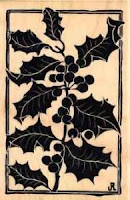Deodar Cedar is a true Cedrus with a long history and multiple uses. The new cultivar, Sterling Frost, offers all this background, plus attractive silvery-blue needles that stand out in landscape use.
Naming
The variety name, Deodar, goes all the way back to
the Indo-Arian language of Sanksrit where the word devadaru comes from combining deva
(god) and daru (wood). The tree is
worshipped as a divine tree among Hindus. Sumerians believed Cedrus groves were
the dwelling place of the gods. This tree is mentioned in both the Bible and
the Talmud.
Aromatherapy
Cedrus
deodorus is often called the incense cedar because the
inner wood is aromatic is used as incense and the resinous oil has been used by
humans for millennia. Cedrus has a
camphor-like top note with a woodsy, balsamic undertone. Essential oil of cedar
is used in aromatherapy for its aromatic properties, and in soaps, household
sprays, floor polishes insecticides and as a low note in perfumes.
The bark was used to make baskets, while cedar twigs were made into brooms. Fine wood powder can be bound into incense cones and burned for the aromatic smoke, plus simple wood chips are great for potpourri.
Historical
Medicinal Uses
Historically,
cedar oil was used medicinally in steam to treat respiratory infections, as
well as used as an astringent in facial preparation, and as a sedative for the nerves.
Construction
and Uses
The Old Testament relates that wood of the
majestic Cedrus was used to build
King Solomon’s Temple in Jerusalem in about the 10th century BCE and
was selected because its aromatic qualities were thought to lead worshipers to
prayer and closeness to God. Cedar timbers are also durable, rot-resistant, close-grained
and can be burnished to take on a high- gloss polish; all qualities excellent
for construction. In the landscape the tree grows 40 to 70 feet, while in their
native Himalayas they reach 250 feet. The wood. Deodor Cedar had many other construction
and ship-building uses.
Landscaping Uses
Today, the landscape industry is enhanced by the silvery-needles
of new Sterling Frost Deodar Cedar by Garden Debut®, trees with all of the
weight of history behind them. With slow to moderate growth rate, Sterling
Frost has a pyramidal shape in youth but is wide-spreading flat-topped at
maturity. Enjoy the silvery foliage
effect in the landscape, or add the needles to holiday wreaths.

























